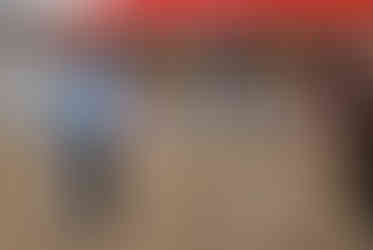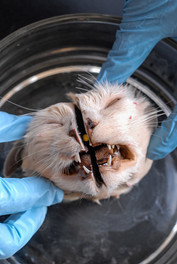Capturing the Lives of Animals
- Claudia Hirtenfelder
- Jan 26, 2024
- 3 min read
Updated: Jul 28
We are regularly exposed to images of animals. We see polar bears on disappearing ice, lions roaming the Africa savanna, and pets posing for portraits. But what about the animals who we use? The animals in zoos or in slaughterhouses? The animals who are transported and tested on? What are their stories and how are they told? I recently had the pleasure of talking to Jo-Anne McArthur, an award-winning photographer and founder of We Animals Media about “animal photojournalism,” a profession that seeks to shed light on the social, ethical, and political significance of how animals – particularly those who humans use – live.
While most images have historically been framed and developed for human enjoyment, the images made by journalists such as Jo-Anne report the lives of individual animals and the contexts in which they live and die. They show how animals are constrained, physically abused, transported, and denied a range of meaningful social relations.
Photos taken by Jo-Anne McArthur at We Animals Media
Making such images is not easy work and involves challenging questions and practices related to access. Animal photojournalists often need to sneak into spaces they are not permitted. Access to spaces like slaughterhouses and labs are heavily regulated and, depending on what country you are in, taking photographs of a farm can be life-threatening. Ag-gag laws in countries like the United States and Canada increasingly criminalize the work of both advocates and investigative journalists. Just recently, two animal advocates were convicted for their participation in a protest and occupation at an Abbotsford hog farm. As noted by Sentient Media, ag-gag laws prevent marketplace transparency and limit the public’s chances to see the conditions of workers and animals in farming facilities.
Despite oftentimes being dangerous work, animal photojournalism is an important tool in helping to develop and illustrate narratives that can show the personal and systematic nature of animal use. These nuanced and professional images can facilitate political change for animals. For example, Jo-Anne recently worked with Animal Justice in Canada on a campaign focused on fur farming in that country. Within weeks after that campaign launched a fur farm in Quebec closed and a mink farmer faced criminal prosecution. Jo-Anne’s images of monkey breeding facilities were also presented at CITES and contributed to the closure of three farms. It is clear then that images can bridge imaginative gaps in policy and decision-making circles by making the stakes of such decisions more apparent.

Over 110 photographers currently contribute to We Animals Media. If you are interested in becoming an animal photojournalist Jo-Anne says it is important to remember that “you will never be a perfect photographer” and that what you have to do is “practice, practice, practice.” Jo-Anne also encourages folks wanting to be photojournalists to learn to get close and to stay a while. This can be difficult work that requires you to dwell in the presence of suffering but, as Jo-Anne notes, it need not be work that requires you to go into restricted spaces. There are examples of animal stories and use everywhere, it just requires curiosity, patience, and time to see and capture them.
Jo-Anne McArthur is an award-winning photojournalist, sought-after speaker, photo editor, and the founder of We Animals Media. She has visited over sixty countries to document our complex relationship with animals. She is the author of three books: We Animals (2014), Captive (2017), and HIDDEN: Animals in the Anthropocene (2020), and is the subject of Canadian filmmaker Liz Marshall’s acclaimed Canadian documentary, The Ghosts in Our Machine. Jo-Anne’s photographs have received accolades from Wildlife Photographer of the Year, Nature Photographer of the Year, Big Picture, Picture of the Year International, the Global Peace Award, and others. Jo-Anne has been a visiting scholar at the University of British Columbia and Denver University, and in 2020, Jo-Anne was a jury member for World Press Photo. She hails from Toronto, Canada. Find out more about Jo-Anne on her website or connect with her on Twitter (@WeAnimals).
























Comments